Record-Keeping Best Practices
-
Complete, accurate and accessible records are a critical part of grant management. They ensure transparency of a project’s progress and provide information for audits and reports. Grant managers may use the method that works best for the project and its staff.
What to Keep
In deciding what to save, remember what records are important for.
- Understanding the project and its outcome
- Managing and planning future projects
- Replicating results
- Demonstrating compliance with rules and regulations
- Reviewing or monitoring information that requires or benefits from oversight
Records Involved
Documentation that needs to be available for an audit even after project completion, is a good starting point for determining what to keep.
- Funder and legal documents
- Budget records
- Personnel records
- Programmatic records
See Grant Document Retention Quick Guide for a complete detailed list of required records.
Include anything else that is relevant to the project, such as planning and protocol descriptions, data manipulations and analysis procedures, personal and group interpretations of results, and important communications and group decisions among collaborators.
How to Keep It
The best record-keeping systems are used regularly and consistently, while overly complex systems are more likely to have incomplete records. The following recommendations highlight ways to keep your records accessible, complete, and protected from loss or damage.
Go Digital
- Keep records electronically
- Scan and file any paper documents at regular intervals
- Verify the scans are legible
- Make routine backups to be stored on a different system
- SPPS network and Google Drive or other cloud-based system
- Be clear which is the active file, and which is the backup
- Don’t overwrite or delete old backups
- Ensure the correct people have access through rights or sharing
- Communicate with fellow users to insure data integrity
Have a Standard File Structure- Arrange the file in a way that works for the project
- Alphabetical
- Chronological
- Use internal files for order
- Use standard naming conventions
- Have a file structure map
- Answers the questions of what to keep and where to file it
- Ensures consistent filing pattern
- Accommodates staff turnover during the project
Where to Keep It
During the project, records are maintained by the grant manager. Following closeout, records may be turned over to the grants management coordinator (GMC) for storage. If retaining the records, notify the GMC where they will be kept, so they can be accessed if needed.
Who Should Have Access
Determine who should have the authority to file documents or alter filed documents for revision, clarity, and updates. Determine who should have access to view documents. With digital records, access is easier to control.
Self-Check
Grant managers should audit their own records periodically to catch and address any gaps and retrain staff on the project’s processes if necessary.
Financial Records
- Records should show that the budget aligns with the actual expended or disbursed funds
- Program managers should be able to track each grant dollar and how it was used
- It is essential that information can be easily pulled for an audit, report, or check-in
Additional Resources
-
- National Institutes of Health - Academic Research Record-Keeping: Best Practices for Individuals, Group Leaders, and Institutions




